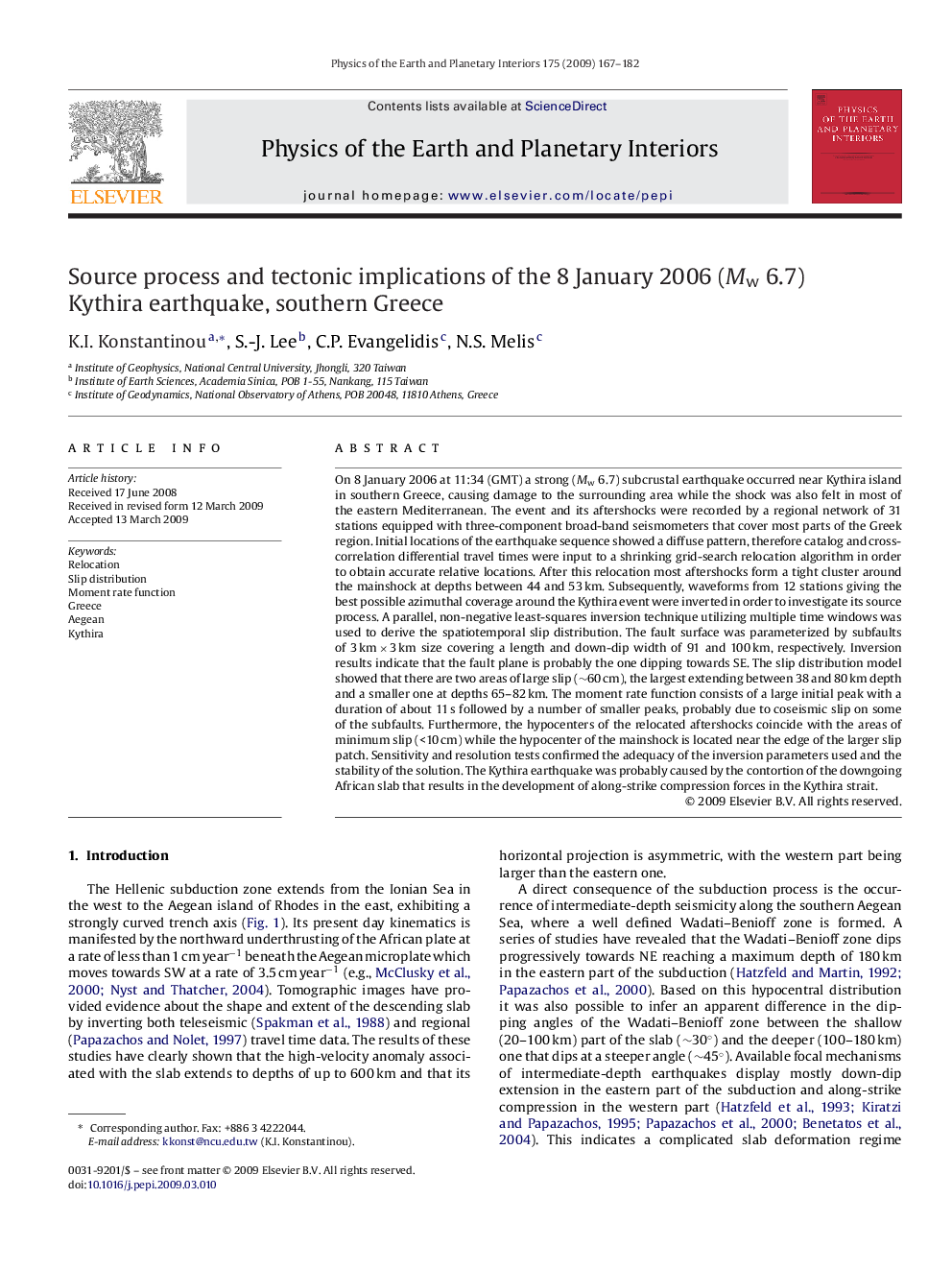| Article ID | Journal | Published Year | Pages | File Type |
|---|---|---|---|---|
| 4742294 | Physics of the Earth and Planetary Interiors | 2009 | 16 Pages |
Abstract
On 8 January 2006 at 11:34 (GMT) a strong (Mw 6.7) subcrustal earthquake occurred near Kythira island in southern Greece, causing damage to the surrounding area while the shock was also felt in most of the eastern Mediterranean. The event and its aftershocks were recorded by a regional network of 31 stations equipped with three-component broad-band seismometers that cover most parts of the Greek region. Initial locations of the earthquake sequence showed a diffuse pattern, therefore catalog and cross-correlation differential travel times were input to a shrinking grid-search relocation algorithm in order to obtain accurate relative locations. After this relocation most aftershocks form a tight cluster around the mainshock at depths between 44 and 53 km. Subsequently, waveforms from 12 stations giving the best possible azimuthal coverage around the Kythira event were inverted in order to investigate its source process. A parallel, non-negative least-squares inversion technique utilizing multiple time windows was used to derive the spatiotemporal slip distribution. The fault surface was parameterized by subfaults of 3 km Ã 3 km size covering a length and down-dip width of 91 and 100 km, respectively. Inversion results indicate that the fault plane is probably the one dipping towards SE. The slip distribution model showed that there are two areas of large slip (â¼60 cm), the largest extending between 38 and 80 km depth and a smaller one at depths 65-82 km. The moment rate function consists of a large initial peak with a duration of about 11 s followed by a number of smaller peaks, probably due to coseismic slip on some of the subfaults. Furthermore, the hypocenters of the relocated aftershocks coincide with the areas of minimum slip (<10 cm) while the hypocenter of the mainshock is located near the edge of the larger slip patch. Sensitivity and resolution tests confirmed the adequacy of the inversion parameters used and the stability of the solution. The Kythira earthquake was probably caused by the contortion of the downgoing African slab that results in the development of along-strike compression forces in the Kythira strait.
Related Topics
Physical Sciences and Engineering
Earth and Planetary Sciences
Geophysics
Authors
K.I. Konstantinou, S.-J. Lee, C.P. Evangelidis, N.S. Melis,
